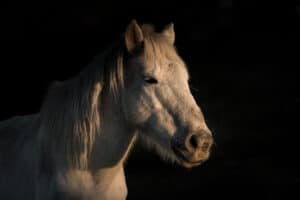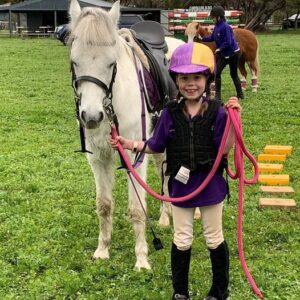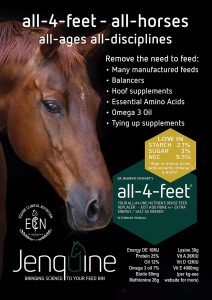
Background photo created by wirestock – www.freepik.com
The oldest horse recorded in the Guiness Book of Records was ‘Old Billy’ who pulled boats along English canals until he was 59yo and died at the age of 62. The oldest Thoroughbred was a 42 year old gelding named ‘Tango Duke’ The greatest age reliably recorded for a pony is 54 years and a part-Arab named ‘Elmer Bandit’, competed successfully in trail rides until he was 38.
Peak performance often occurs in the mid to late teens and many horses continue to be ridden and compete well into their 30s. If you are concerned about the appropriate level of exercise for your horse, seeking veterinary advice can help when developing training programs.
AGEING CHECK LIST
With adequate worming and dental care, older horses can easily maintain good body condition well into their 20s and even 30s on normal balanced diets, without the need for special ‘senior’ of ‘geriatric’ feeds.
Protein
The % protein of a feed tells you nothing about whether the horse is getting enough protein. If a feed is 10% protein and a horse eats 1kg of the feed – the horse receives 100g of protein. If another feed is 20% protein and a horse eats 1⁄2 kg, it still receives 100g of protein. But, if the protein is not good ‘quality’ your horse won’t be able to use it to build muscle.
Building topline and muscle is a bit like making cup cakes – if you want chocolate cup cakes you need cocoa. Once that runs out, you can’t make anymore chocolate cup cakes! If the diet doesn’t have enough protein your horse can’t build muscle, bone or red blood cells. Lucerne and soymeal are excellent sources of good quality protein. As a rule of thumb, if a horse is eating grass and you are also feeding it, all the hay and chaff should be lucerne to make sure your horse is getting enough protein. Adding 50-200g of soymeal is especially helpful for older horses that need to build more muscle and less fat.
Oils such as linseed and canola are high in Omega 3 and help keep joints healthy and the immune system strong. Oil provides a cool and steady supply of energy. Horses fed 1-2 cups of linseed/canola/omega oil each day have calmer temperaments and behaviour. Introduce the oil gradually over 3-4 weeks.
Corn, sunflower and rice-bran oils are high in Omega 6 and can increase inflammation.

Photo: supplied by Portarlington Pony Club
Starch/sugar feeds
Oats, barley, corn, bran and pollard are high in sugar. But muscle building and strength requires protein and this is especially important as horses get older.
Sweet feeds and extruded/micronized feeds often have high sugar/starch and molasses levels. They are not recommended for horses and ponies that are easy-keepers, too fat or have Cushings and EMS. A high fibre diet and adding oil and a nutrient balancer removes the need for supplements. It is a much safer way to feed.
Soaking hay washes out most of the sugar. If you need to soak hay to reduce the sugar, note that this causes a significant loss of magnesium.
Regular foot trimming and dental care, a flat paddock free from pot holes and ruts PLUS regular veterinary checks can help reduce many age-related conditions. And always choose companions carefully to avoid bullying!
DISCLAIMER All content provided in this article is for general use and information only and does not constitute advice or a veterinary opinion. It is not intended as specific medical advice or opinion and should not be relied on in place of consultation with your veterinarian.
More information on equine nutrition is available at www.jenquine.com
Meet the author and PCA’s resident equine nutritionist
Dr Jennifer Helen Stewart
BVSc BSc PhD Dip BEP MRCVS
Equine Veterinarian and Consultant Nutritionist – CEO Jenquine

Dr Jennifer Stewart is an equine veterinarian with over thirty five years’ experience. She is also a consultant nutritionist and has formulated feeds, custom mixes and supplements for leading international horse feed manufacturers in Australia, India, Ireland, Japan, New Zealand, Philippines, South Africa, Thailand, Turkey and the UAE. Dr Stewart is passionate about equine nutrition and its role in the management, treatment and prevention of many equine diseases. She is committed to bringing ‘science to the feed bin’.
Dr Stewart graduated BSc (vet) and BVSc at the University of Sydney. Her research thesis was “Resistance of Equine Strongyles to Benzimidazole Anthelmintics” and her PhD “Studies on Heart and Lung Function in Foals”. She worked at the Universities of North Carolina, Michigan and Florida USA in equine medicine, antibiotics and exercise physiology. Following this was a time spent in Newmarket and Cambridge England, in stud and race track research and practice, before establishing an exclusively equine practice on the Central Coast of NSW Australia. She has been an official veterinarian for the Australian Jockey Club for over 20 years, was one of the team of equine veterinarians for the Sydney 2000 Olympic Games and consultant nutritionist for Mitavite for 10 years.
Dr Stewart has spent over twenty five years working on collaborative research projects into gastrointestinal and exercise physiology with major Universities; lecturing and supervising university and TAFE students; consulting to veterinary practices, trainers, pony clubs, owners, equestrian centres and studs; speaking at seminars in Australia, Middle East, South Africa, Philippines, SE Asia, Hong Kong, Japan, Turkey, India and New Zealand, and writing regularly for equine industry magazines. This experience in research, equine medicine and veterinary practice has given Dr Stewart a deep understanding of the complexities of equine health and performance; growth and development of young horses, and feeding practices for the management and prevention of diseases.
Watch Dr Stewart talk about her first love of horses and why she chose to become a vet in this short clip. Pony Club Australia is grateful for Dr Stewart preparing this laminitis article for our Horse Resource page. Please browse her other articles, blog and resources at Jenquine.


